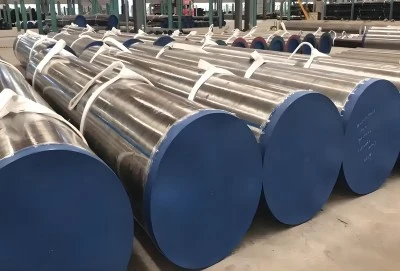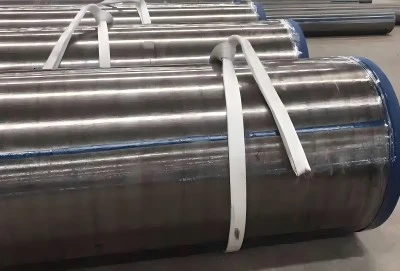There are two common types of structural steel tubing that are frequently mentioned: mechanical and structural steel tubing, respectively. Despite their superficial resemblance, these two varieties are distinct and suitable for a variety of applications.
Structural steel tubing is primarily intended for use in load-bearing applications, providing stability and strength for projects involving infrastructure and construction. Mechanical steel tubing, on the other hand, is designed to have particular mechanical properties, making it ideal for machinery and automotive components.
We will discuss the main differences between structural steel tubing and mechanical steel tubing in this article. We'll look at their particular uses, applications, manufacturing methods, and physical characteristics. When choosing the right kind of tubing for a given project, it is essential to understand these distinctions to ensure optimal performance and safety.
|
|
|
Purpose And Application
The intended use of mechanical and structural steel tubing is the primary distinction. Mechanical steel tubing is made for applications that require smooth surfaces and precise dimensions. It's generally utilized in apparatus, car parts, and other mechanical frameworks where tight resistances are urgent. Mechanical steel tubing, for instance, can be found in precision equipment, hydraulic cylinders, and shock absorbers.
Structural steel tubing, on the other hand, is designed to provide strength and support for architectural and construction applications. It is essential to a wide range of structures, including bridges, buildings, heavy machinery frameworks, and so on, as its name suggests. Structural steel tubing is necessary to guarantee the stability and integrity of large structures because it is designed to withstand significant loads. It is an essential component in modern engineering and construction practices because of its robust nature, which enables it to support not only the weight of the structures themselves but also external forces like wind and seismic activity.
While the two kinds of tubing are produced using steel, the distinctions in their applications lead to varieties in their assembling processes and actual properties. To better comprehend the differences between mechanical and structural steel tubing, let's investigate these aspects further.
Manufacturing Process
The assembling processes for mechanical and primary steel tubing contrast essentially, mirroring their unmistakable purposes and applications.
Typically, structural steel tubing is made by cold drawing or cold rolling. This strategy includes pulling or moving the steel at room temperature, which brings about an item with more tight resistances, smoother surfaces, and more exact aspects. Additionally, the steel's strength and hardness are increased during the cold working process, making it suitable for applications requiring wear resistance and durability.
Structural steel tubing, on the other hand, is frequently produced by hot-forming. This includes warming the steel to high temperatures prior to molding it into the ideal structure. Larger, thicker-walled tubes that are ideal for structural applications can be made using the hot-forming method. While this strategy may not deliver a similar degree of layered accuracy as cool drawing, it brings about tubing with brilliant solidarity to-weight proportions and great weldability, which are urgent for underlying applications.
It's significant that some underlying steel tubing can likewise be cold-shaped, particularly for more modest sizes. However, the tolerances and surface finish requirements of the manufacturing process remain distinct from those of mechanical tubing.
Size And Shape
One more key contrast among mechanical and underlying steel tubing lies in their sizes and shapes. Compared to structural steel tubing, mechanical steel tubing typically comes in smaller diameters and wall thicknesses. This is due to the fact that smaller, precise parts are frequently needed in mechanical applications. The extents of mechanical tubing typically range from tiny measurements (under an inch) up to around 12 inches, with wall thicknesses that can be basically as slim as 0.020 inches.
Structural steel tubing, then again, is accessible in a lot more extensive scope of sizes, including bigger widths and thicker walls. It's normal to find primary steel tubing with widths surpassing 24 inches and wall thicknesses of an inch or more. This bigger size range is important to meet the assorted requirements of development and design projects.
As far as shape, mechanical steel tubing is generally regularly round, in spite of the fact that it can likewise be tracked down in square or rectangular shapes for explicit applications. However, structural steel tubing is available in a variety of shapes to meet various structural requirements. Square, rectangular, and round are the most common shapes, but you can also find more specialized shapes like oval and elliptical tubing to meet specific architectural or engineering needs.
The state of primary steel tubing is many times picked in view of the heap bearing necessities of the application. For instance, round tubing might be chosen for a pipeline or column where uniform stress distribution is important, while square or rectangular tubing might be preferred for its flat surfaces and ease of connection in a building frame.
Contact Longma Group
In conclusion, despite the fact that structural steel tubing and mechanical steel tubing are both essential components in a variety of industries, their functions and characteristics are distinct. Mechanical steel tubing succeeds in applications requiring accuracy and smooth surfaces, while underlying steel tubing sparkles in development and structural ventures where strength and backing are vital. Understanding these distinctions is pivotal for specialists, draftsmen, and task administrators to guarantee they select the right sort of tubing for their particular requirements.
Choosing the right kind of steel tubing can have a significant impact on your project's success and longevity, whether you're working on a precision mechanical project or a large-scale construction project. Longma Group is well-equipped to assist you in selecting the appropriate steel tubing for your requirements as specialists in the production of steel pipes, such as LSAW (Longitudinal Submerged Arc Welded) and ERW (Electric Resistance Welded) steel pipes. With a yearly result surpassing a million tons toward the finish of 2023, we have the limit and mastery to meet an extensive variety of steel tubing necessities. Please do not hesitate to contact us at info@longma-group.com for additional information or to discuss your specific requirements.














